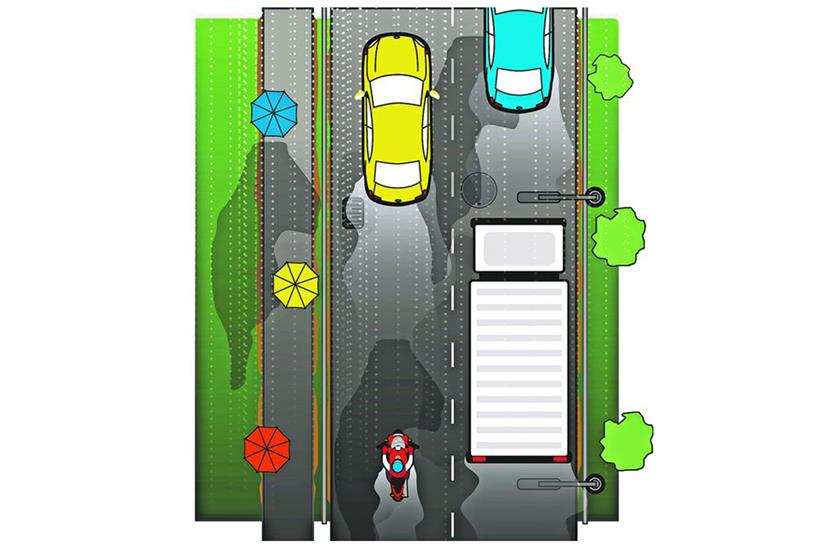How to keep safe when riding in heavy rain...
Look after your visor
Clear vision is even more important in heavy rain. This is doubly important as rainwater also tends to cling to a mucky visor, further reducing what you can see. Use an anti-fog device such as a Pinlock on your visor to prevent it steaming up, and try to avoid opening your visor, as once rain gets on the inside it can be very hard to clear.
Keep your distance
You need to double your braking distance in heavy rain for two reasons. Firstly because you physically can’t stop as quickly as in the dry and, secondly because your visibility is impaired, which will shorten your reaction time.
Which lane is safest?
Generally speaking, on dual carriageways and motorways the inside lane holds the most water. This is because trucks often create two ‘gutters’ – deeper channels of water where the lorry wheels run. Beware, especially when moving back into this lane.
TOP STORIES
- TT 2017: Alan Bonner dies in qualifying incident
- EBR for sale
- SWM Superdual first ride
- TT 2017: Manx GP finisher Davey Lambert dies after Superbike crash
- Bike of the day: Suzuki GSX-R1000
Danger lurks in dips
Dips or undulations in the road will hold water. One classic location is where a road passes through a tunnel under a larger road. Take particular care in autumn as leaves can block drains causing flooding.
Deep water
Any water needs to be approached with extreme caution. Are there any obstructions you can’t see? Do you know for certain how deep it is? If you decide to enter, do so slowly and try to avoid braking.
Get the right tyres
Over the years tyre development means the level of grip in cold and wet conditions has improved vastly. Even so, sport or trackday tyres aren’t going to work as well as all-purpose/touring tyres in the wet. If you intend to ride throughout winter choose the correct rubber. The difference between a trackday tyre and a winter tyre in the wet is huge. Tyre pressure is vital too; the grooves in the tyre won’t work correctly in the wet if the pressure is too high or too low.
Electronic aids
If you’re lucky enough to have rider aids on your bike, use them. Turn up the traction control, turn down the power and make sure the ABS is activated. All too often we forget about rider aids or just don’t bother. If applicable, also adjust the suspension as some bikes have a wet mode which makes the suspension more plush.
Looking for the perfect two-wheeled companion? Visit MCN Bikes For Sale website or use MCN’s Bikes For Sale App.


